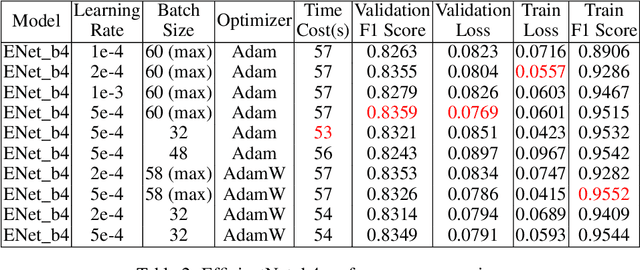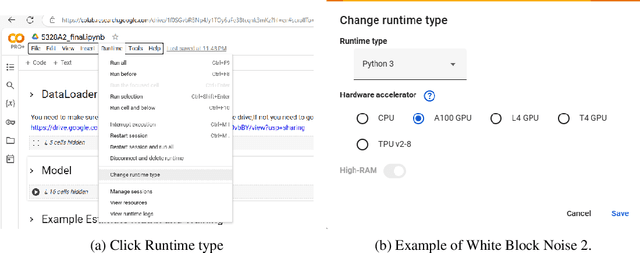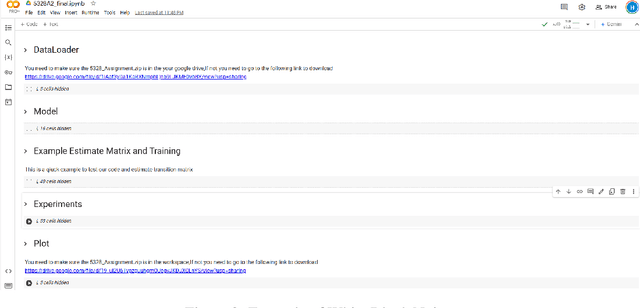Haixu Liu
Tighnari: Multi-modal Plant Species Prediction Based on Hierarchical Cross-Attention Using Graph-Based and Vision Backbone-Extracted Features
Jan 05, 2025



Abstract:Predicting plant species composition in specific spatiotemporal contexts plays an important role in biodiversity management and conservation, as well as in improving species identification tools. Our work utilizes 88,987 plant survey records conducted in specific spatiotemporal contexts across Europe. We also use the corresponding satellite images, time series data, climate time series, and other rasterized environmental data such as land cover, human footprint, bioclimatic, and soil variables as training data to train the model to predict the outcomes of 4,716 plant surveys. We propose a feature construction and result correction method based on the graph structure. Through comparative experiments, we select the best-performing backbone networks for feature extraction in both temporal and image modalities. In this process, we built a backbone network based on the Swin-Transformer Block for extracting temporal Cubes features. We then design a hierarchical cross-attention mechanism capable of robustly fusing features from multiple modalities. During training, we adopt a 10-fold cross-fusion method based on fine-tuning and use a Threshold Top-K method for post-processing. Ablation experiments demonstrate the improvements in model performance brought by our proposed solution pipeline.
Google is all you need: Semi-Supervised Transfer Learning Strategy For Light Multimodal Multi-Task Classification Model
Jan 03, 2025



Abstract:As the volume of digital image data increases, the effectiveness of image classification intensifies. This study introduces a robust multi-label classification system designed to assign multiple labels to a single image, addressing the complexity of images that may be associated with multiple categories (ranging from 1 to 19, excluding 12). We propose a multi-modal classifier that merges advanced image recognition algorithms with Natural Language Processing (NLP) models, incorporating a fusion module to integrate these distinct modalities. The purpose of integrating textual data is to enhance the accuracy of label prediction by providing contextual understanding that visual analysis alone cannot fully capture. Our proposed classification model combines Convolutional Neural Networks (CNN) for image processing with NLP techniques for analyzing textual description (i.e., captions). This approach includes rigorous training and validation phases, with each model component verified and analyzed through ablation experiments. Preliminary results demonstrate the classifier's accuracy and efficiency, highlighting its potential as an automatic image-labeling system.
nnY-Net: Swin-NeXt with Cross-Attention for 3D Medical Images Segmentation
Jan 02, 2025Abstract:This paper provides a novel 3D medical image segmentation model structure called nnY-Net. This name comes from the fact that our model adds a cross-attention module at the bottom of the U-net structure to form a Y structure. We integrate the advantages of the two latest SOTA models, MedNeXt and SwinUNETR, and use Swin Transformer as the encoder and ConvNeXt as the decoder to innovatively design the Swin-NeXt structure. Our model uses the lowest-level feature map of the encoder as Key and Value and uses patient features such as pathology and treatment information as Query to calculate the attention weights in a Cross Attention module. Moreover, we simplify some pre- and post-processing as well as data enhancement methods in 3D image segmentation based on the dynUnet and nnU-net frameworks. We integrate our proposed Swin-NeXt with Cross-Attention framework into this framework. Last, we construct a DiceFocalCELoss to improve the training efficiency for the uneven data convergence of voxel classification.
Best Transition Matrix Esitimation or Best Label Noise Robustness Classifier? Two Possible Methods to Enhance the Performance of T-revision
Jan 02, 2025



Abstract:Label noise refers to incorrect labels in a dataset caused by human errors or collection defects, which is common in real-world applications and can significantly reduce the accuracy of models. This report explores how to estimate noise transition matrices and construct deep learning classifiers that are robust against label noise. In cases where the transition matrix is known, we apply forward correction and importance reweighting methods to correct the impact of label noise using the transition matrix. When the transition matrix is unknown or inaccurate, we use the anchor point assumption and T-Revision series methods to estimate or correct the noise matrix. In this study, we further improved the T-Revision method by developing T-Revision-Alpha and T-Revision-Softmax to enhance stability and robustness. Additionally, we designed and implemented two baseline classifiers, a Multi-Layer Perceptron (MLP) and ResNet-18, based on the cross-entropy loss function. We compared the performance of these methods on predicting clean labels and estimating transition matrices using the FashionMINIST dataset with known noise transition matrices. For the CIFAR-10 dataset, where the noise transition matrix is unknown, we estimated the noise matrix and evaluated the ability of the methods to predict clean labels.
Multi-Modal Video Feature Extraction for Popularity Prediction
Jan 02, 2025Abstract:This work aims to predict the popularity of short videos using the videos themselves and their related features. Popularity is measured by four key engagement metrics: view count, like count, comment count, and share count. This study employs video classification models with different architectures and training methods as backbone networks to extract video modality features. Meanwhile, the cleaned video captions are incorporated into a carefully designed prompt framework, along with the video, as input for video-to-text generation models, which generate detailed text-based video content understanding. These texts are then encoded into vectors using a pre-trained BERT model. Based on the six sets of vectors mentioned above, a neural network is trained for each of the four prediction metrics. Moreover, the study conducts data mining and feature engineering based on the video and tabular data, constructing practical features such as the total frequency of hashtag appearances, the total frequency of mention appearances, video duration, frame count, frame rate, and total time online. Multiple machine learning models are trained, and the most stable model, XGBoost, is selected. Finally, the predictions from the neural network and XGBoost models are averaged to obtain the final result.
 Add to Chrome
Add to Chrome Add to Firefox
Add to Firefox Add to Edge
Add to Edge